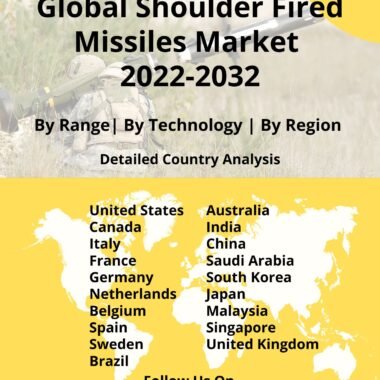Description
Global Amphibious Vehicle Market
Frequently Asked Questions of Amphibious Vehicle Market
An amphibious vehicle market trends may travel on land as well as through water. Light, wheeled command and reconnaissance vehicles to big tanks are examples of military amphibious vehicles. Waterproof screens, which are employed to allow military vehicles to ford larger waters, can provide a ‘wading’ capacity to some vehicles. Telescopic snorkels can be used to allow certain vehicles to cross water deeper than the vehicle itself. Air-cushioned landing craft (hovercraft) can replace larger wheeled and tracked vehicles in specific roles, particularly as landing craft. AAVs are designed to operate in and out of the water, in tough situations, transporting troops, equipment, and other vehicles from ship to shore.
The AAV7A1 Assault Amphibious Vehicle (AAV) is the primary amphibious vehicle utilized by the US Marine Corps to transport marines and cargo from ship to shore. The AAV is one of the world’s best amphibious assault vehicles, thanks to its boat-like hull design and powerful water jets. The AAV7A1 can execute amphibious missions up to Sea State 3 and has a cruising speed of 13kmph and a water endurance of more than seven hours. It is armed with a.50 cal machine gun and an MK19 40mm grenade machine gun and can be launched and retrieved from Landing Ship, Dock (LSD), and landing platform/dock (LPD).
The infantry battle vehicle BMP-3 provides improved firepower, mobility, and people protection. The BMP-3F has amphibious systems such as a lighter anti-surge vane and an air intake tube and can operate at Sea State 3. It can float for seven hours and is powered by two water jet propellers and a four-stroke, liquid-cooled diesel engine, allowing it to reach a top speed of 10kmph. A 100mm 2A70 gun, a 30mm 2A72 automatic gun, and 7.62mm machine guns provide fire support. At Sea State 2, the vehicle can fire all onboard weapons and is protected from small arms fire and shell splinters.
Major factors driving Amphibious Vehicle Market Growth
Unmanned amphibious vehicles will provide a steady supply of fuel for armored combat vehicles, electric generators, and logistics operations for soldiers pushing their way interior from attack beaches. Surveillance payloads with different sensors and medical evacuation variants are also attracting attention. These vehicles can extract casualties, supply ammunition to the frontline and also prove ISR data. All this can be achieved by just changing the payload for the mission requirement. These are some of the key market trends that will drive market growth
Trends influencing the Amphibious Vehicle Market Size
Machine autonomy solutions for amphibious vehicles, as well as aerial, ground, surface, and undersea vehicles that must operate in combat conditions are in demand. The hybrid engine that combines the power of a diesel engine with a silent electric motor is also one of the key market trends that influence the growth of the market
Amphibious Vehicle Market Forecast & Dynamics
Increasing defense spending will enable the procurement of newer amphibious vehicles market report. Nations are also investing in developing the next generation of amphibious assault vehicles (AAV). The increase in defense spending will also encourage upgrading existing amphibious platforms with newer technologies and equipment. Procurement will also be driven by prevailing geo-political conditions in Europe and the Asia Pacific. The amphibious vehicle market forecast includes a comprehensive market analysis and market size. The market analysis includes regional market size, drivers, restraints, and opportunities. The regional analysis also includes country-wise amphibious vehicle market size.
Amphibious Vehicle Market Analysis for Recent Developments
BAE Systems will deliver 463 vehicles to three European partners — the United Kingdom, Sweden, and Germany – with Cummins engines manufactured in Darlington. DE&S negotiated the UK component of the international Collaborative All-Terrain Vehicle (CATV) program, and the UK Commando Force will receive 60 Future All-Terrain Vehicles (FATV) under a £140 million contract beginning in February 2025. The Littoral Response Groups of the Navy will use the vehicles. Highly mobile amphibious task forces formed to respond to emergencies in areas strategically crucial to the United Kingdom. The amphibious, multi-role, armored vehicle will be capable of operating in the worst weather conditions and most remote places, including variations for troop transport, supplies, medical evacuation, recovery, and command and control.
The Marine Corps has taken custody of what might become the service’s next replacement for its four-decade-old family of amphibious reconnaissance vehicles. Textron Systems revealed this week that its prototype “Cottonmouth” vehicle had been handed to the Marine Corps in Silver Springs, Nevada as part of the service’s Advanced Reconnaissance Vehicle (ARV) program. The ARV is planned to be the successor to the Light Armored Vehicle (LAV)-25, which has been a backbone of the Marine Corps light armored recon battalions since 1983 and was recently recognized as the most accident-prone vehicle in the service’s fleet by the Government Accountability Office.
Chaiseri unveiled its most recent prototype, the 8×8 Armoured Wheeled Amphibious Vehicle market analysis(AWAV), which weighs 23.2 tons and has a payload capacity of 2.5 tons. In the First Win series, Chaiseri used the AWAV designation for a 4×4 amphibious vehicle, but this new 8×8 model is a separate design. The AWAV can carry a crew of three and eleven passengers while providing STANAG 4569 Level 2 ballistic protection and Level 3b mine protection. Even though its amphibious capabilities have yet to be precisely demonstrated, Chaiseri’s team is confident in the vehicle’s performance, citing their previous experience with the 4×4 amphibious variant. Chaiseri intends to deliver the AWAV prototype to the RTMC by the end of 2024 for official Royal Thai Navy trials. BAE and Iveco Launch an Amphibious Combat Vehicle in the International Market. The amphibious vehicle market growth is designed to meet military customers’ future mission requirements. It includes areas for newer technologies focusing on electronic warfare, anti-air defense, reconnaissance capabilities, and the integration of unmanned aircraft systems. The vehicle allows the US Marines to take on new missions and use future components in global operations. Customers can maintain situational awareness in the battlespace by using the Command and Control variant (ACV-C). The ACV Recovery (ACV-R) variant is designed for direct field maintenance, recovery, and related support to other ACV family vehicles. The ACV-30, the most recent iteration of the system, provides protection and lethality to warfighters while maintaining troop and payload capacity.







